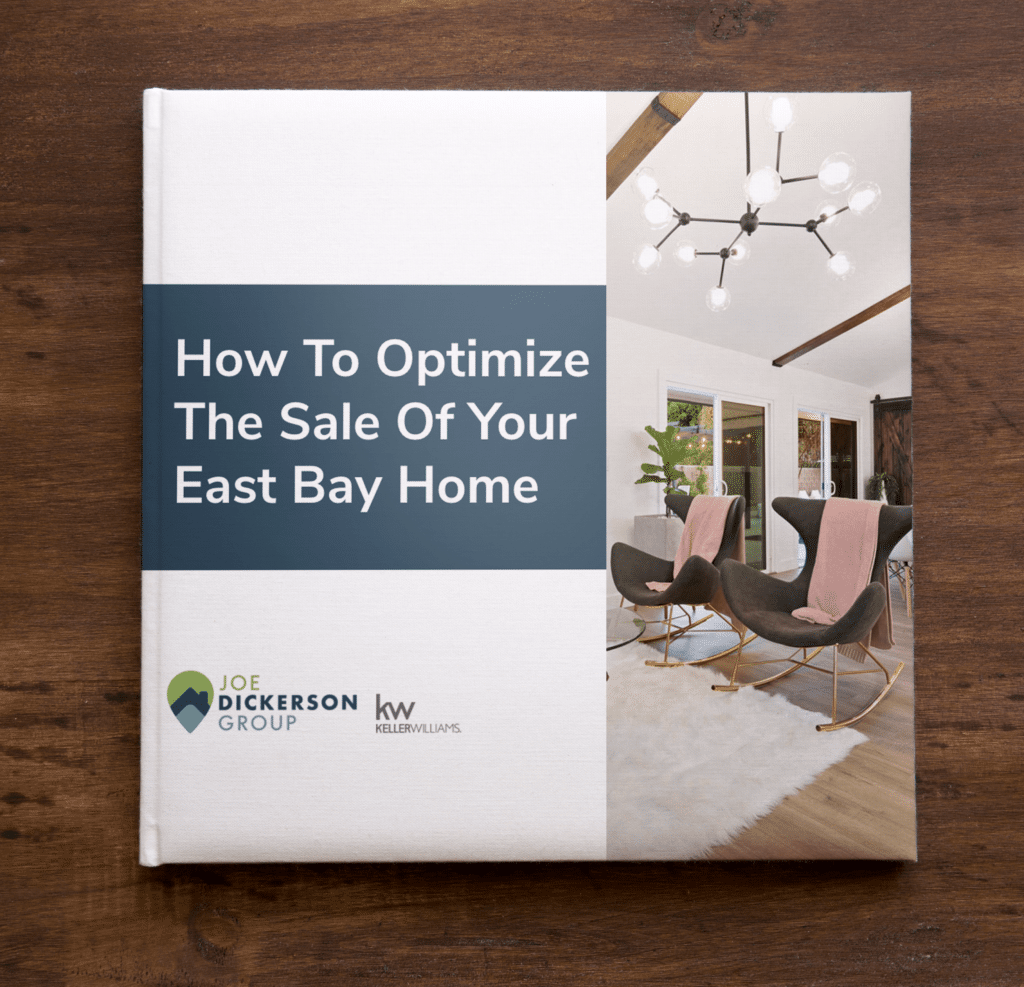Did you know that the interest rate on home loans rose to over 18% in the 1980s?
That means that the monthly payments on a $100,000 home (assuming a $20k down payment) would have been over $1,200 a month, leading to a whopping total payment of roughly $450,000 over the span of a 30-year mortgage (including the $20k down payment).
Compare that to the home mortgage interest rates we’re seeing of late – much closer to 3%. That same $100,000 home with a 3% interest rate would lead to a monthly payment of just $340 or so.
Over the span of 30 years, you will have paid roughly $140,000 (including your original $20k down payment) – roughly $300k less than in the 18% interest rate example.
This is what we’ll dive into in this article. While most buyers focus on the purchase price of a home, the fact of the matter is that mortgage rates can have a significant impact on your monthly payments, meaning that you should factor the mortgage rate in – together with purchase price – when considering buying a home.
The Impact Of Home Mortgage Interest Rate And Purchase Price On Buying A Home
When you’re buying a home, there are two main factors to take into consideration as you decide how much home you can comfortably afford:
- Down payment
- Monthly Payment
Down Payment
If you’re using a home mortgage loan to finance the purchase of your home, you’ll need to plan to put down a certain percentage of the purchase price of the home as a down payment.
While the standard down payment amount is 20%, there are opportunities to put in a lower down payment (for example, via Federal Housing Administration, or FHA loans), or to put down more up front in order to lower your total loan amount and thus your monthly payments as well.
That means that if you were to purchase a $1 million home, you should plan to put in $200,000 for the down payment. If you qualify for Federal Housing Administration (FHA) loans, you may be able to put down as little as 3.5% – in this case, $35,000 – though your monthly payment will be substantially higher.
Monthly Payment
Together, the purchase price of the home, your down payment, and the interest rate on the mortgage will determine your monthly payment.
Those monthly mortgage payments typically include four elements, sometimes referred to as PITI:
- Principal – the initial amount you borrowed
- Interest
- Taxes
- Insurance
Your down payment will directly impact your principal, and the interest rate on the mortgage will directly impact your monthly interest payment.
If you get a 30-year fixed-rate mortgage for $800,000 with an interest rate of 3%, your monthly payment would be about $3,400 per month.
That same loan at a 4% interest rate leads to a monthly payment of about $3,800 per month ($400 more per month than the loan at 3% interest).
As you can see, home purchase price isn’t the only thing that factors into affordability. The interest rate can have a substantial impact as well.
Advantages Of Lower Home Prices
Most home buyers zero in on home prices as their main point of focus when considering whether now is the right time to buy a home and often ignore or downplay the importance of interest rate.
This means that, when home prices are high, many potential buyers will wait it out, hoping for a correction and a decrease in home prices in the near future.
The direct impact of buying a home at a lower purchase price is that you won’t need to bring as much money to the table for your down payment.
Further, even though buying a lower-priced home with a higher interest rate loan might lead to a higher monthly payment, you could eventually refinance and lower your monthly payment, though it’s not guaranteed.
Advantages Of Lower Interest Rates
It can be easy to get FOMO (fear of missing out) when you see today’s mortgage rates as low as we’ve seen them over the last several months – sometimes under 3%. Compare that to the 18% mortgage rates we talked about earlier, and that can seem like free money in comparison.
Since mortgage rates factor significantly into your monthly payment, low mortgage rates can boost your buying power. As we saw earlier, a mere 1% increase in the interest rate can lead to hundreds of dollars more that you’ll need to pay each month, which can add up quickly!
Are Home Prices And Interest Rates Tied Together?
Home price and mortgage rates often impact each other. When mortgage rates drop, more people think about buying a home, thus increasing the number of buyers looking for a home. This drives up demand, which in turn tends to drive up home prices.
Similarly, when mortgage rates go up, some buyers may hit pause on their home search process. This can lower demand, which can also lower home prices.
Something you should keep in mind though, is that in hot markets like Oakland and the East Bay, demand (and thus home prices) can remain high, despite rising mortgage rates.
Example Scenario: Home Price Vs. Interest Rate
While it’s clear that both home prices and mortgage rates can have a substantial impact on your buying power and monthly payment, which one is more important?
Let’s take a deeper dive to see whether home price or interest rates have a bigger impact on your purchase power.
Meet Holly Homeowner. Here’s what we know about Holly:
- Holly originally purchased her home for $500,000.
- The interest rate on Holly’s loan is 5%.
- Holly put in a 20% down payment at $100,000.
- Her total loan amount was for $400,000.
- Her monthly mortgage payments are $2,147.
Knowing that mortgage rates are currently very low, Holly wants to sell her home because she knows that those low interest rates are leading to higher demand and thus likely a higher sales price for her home.
Now meet Billy Buyer. Billy is interested in purchasing Holly’s home, especially since he’s seen that current mortgage rates are low. The lower interest rates give Billy more purchasing power, so he’s able to offer a competitive price on Holly’s home.
Holly accepts Billy’s offer. Here are the highlights of the transaction:
- Billy will be purchasing Holly’s home for $635,000 (meaning Holly’s getting $135k more than what she paid for the home).
- Billy is able to secure a 30-year fixed-rate mortgage at 3% interest.
- Billy will be putting in a down payment of $127,000 (20% of $635k).
- Billy’s total loan amount will be $508,000.
- Billy’s monthly mortgage payments will be $2,142.
What this means is that Billy’s monthly mortgage payment will be nearly identical to the monthly mortgage payment Holly has been making, even though Billy is buying the home for $135,000 more than what Holly’s original purchase price was when she purchased the home.
Over the span of 30 years, Billy will have paid about $263,000 in interest. Compare that with Holly, who would have paid about $372,000 in interest over 30 years, despite having purchased the home for a much lower price than Billy.
This is the power of interest rate and the impact that interest rates can have on your purchasing power, as well as your long-term financial picture.
Should You Wait To Buy A Home?
Timing the real estate market is extremely difficult, even for seasoned experts. While it might be tempting to wait until home prices or interest rates drop to a certain level, here are two things to consider:
- In a hot market like Oakland and the East Bay, home prices may not drop by a substantial amount anytime soon.
- While you’re waiting for a potential drop in home prices, you could be missing out on the advantages of a low interest rate.
- Waiting for certain home prices or interest rates could also mean you’re losing more money each month to your rent payments.
Related: How To Ensure Maximum Resale Value When Purchasing A Home
Why A Low Interest Rate Can Be Good For Homeowners
A low interest rate doesn’t just impact buyers; it can be beneficial for homeowners as well. If you currently own a home, now might be a good time to consider whether to refinance or sell your home.
If the interest rate on your existing home loan is a good deal higher than today’s mortgage rates (and you’re planning on staying in the home for several more years), it might be a great time to refinance.
While there are costs associated with refinancing your loan, it could significantly lower your monthly payment.
Another path to consider when mortgage rates are low is selling your home. Lower mortgage rates often lead to higher demand, which drives up prices. Thus, selling your home now could lead to a higher sales price than you might get in a higher interest rate environment.
Other Factors To Consider When Purchasing A Home
While home price and interest rate are two of the biggest factors to consider when buying a home, they are not the only elements in play. When purchasing a home, be sure to think about the various aspects of the purchase, including other costs, market growth, and more.
Taxes And Insurance
Remember PITI? Principal, interest, taxes, and insurance. These are the four elements that go into your monthly payment.
Property taxes vary by city, county, and state, so you’ll want to get a good idea of what to expect based on the area where you’re looking to buy your home.
Homeowner insurance premiums can also vary based on different insurance companies, plans, risks, and coverage. If you’re getting an FHA loan, you’ll also need to factor in mortgage insurance payments.
Maintenance And Renovation Costs
While you might balk at a home at a higher price point, consider the condition of the home as well. If you purchase an older home that needs more work, you may end up spending more on maintenance and repairs than if you were to purchase a home in better condition.
Further, if you’re planning on renovating the home, be sure to get quotes, estimates, and timelines up front, to determine whether it makes sense.
HOA Fees
If you’re purchasing a condo or considering a neighborhood that’s part of a homeowners association (HOA), you will likely need to pay HOA fees. These fees can vary drastically, so you should get an idea of what to expect going in and factor these into your monthly payment.
Are You Looking To Buy, Sell, Or Invest?
If you’ve made it this far, you now have a good understanding of the joint impact of home prices and mortgage rates on your overall purchase power and monthly payment.
While it might be tempting to focus solely on the price of the home, you’ve now seen that mortgage rates can factor substantially into your monthly payment, as well as the total interest you’ll pay over time.
If you’re considering buying, selling, or investing in a home here in Oakland, Berkeley, the East Bay, or elsewhere, we’re here to help!
We know how tricky it can be to navigate the competitive Bay Area real estate landscape, and our team is here to help you figure out the best fit for your situation and goals.



